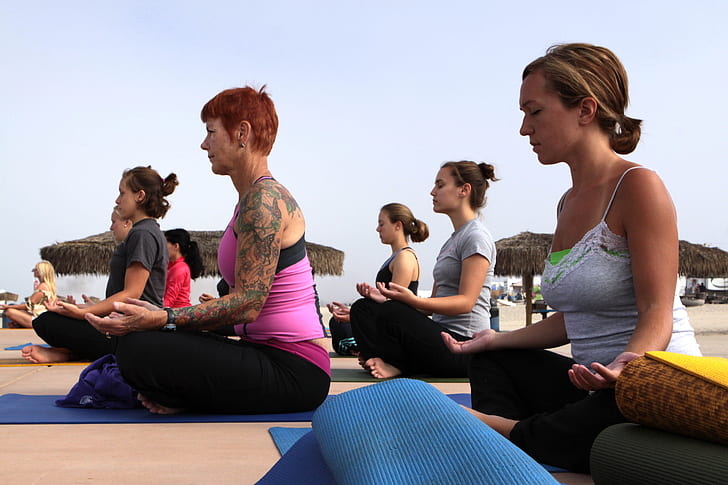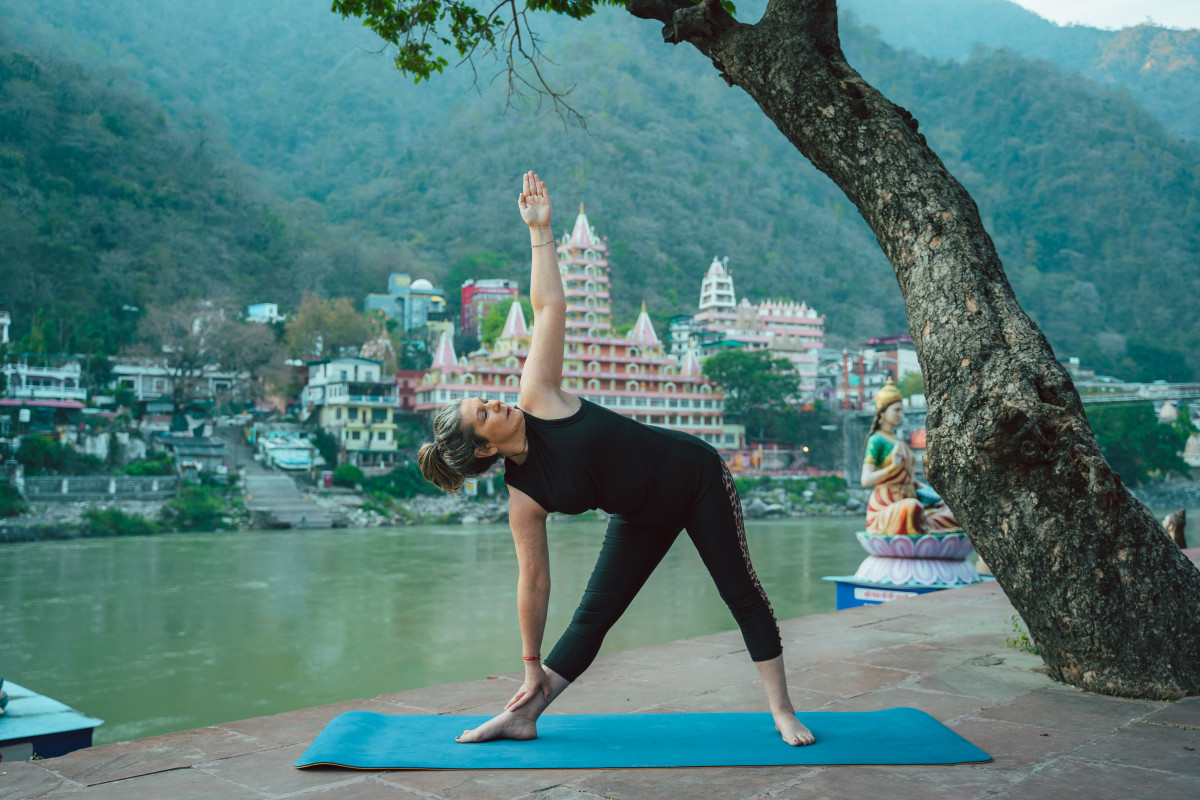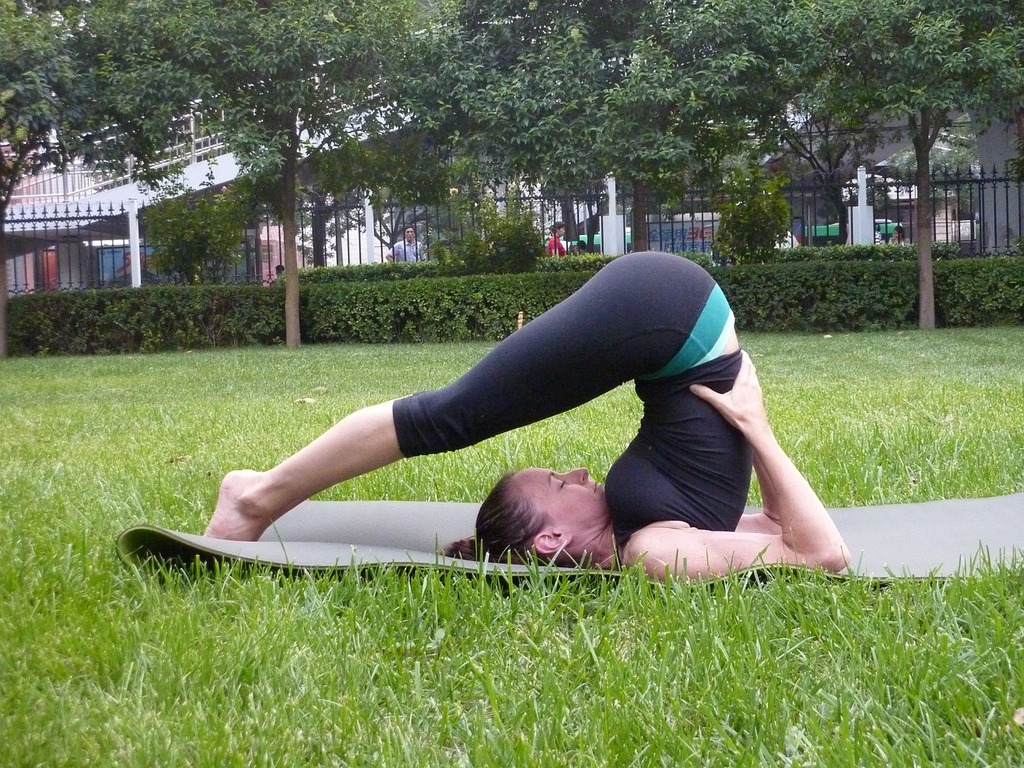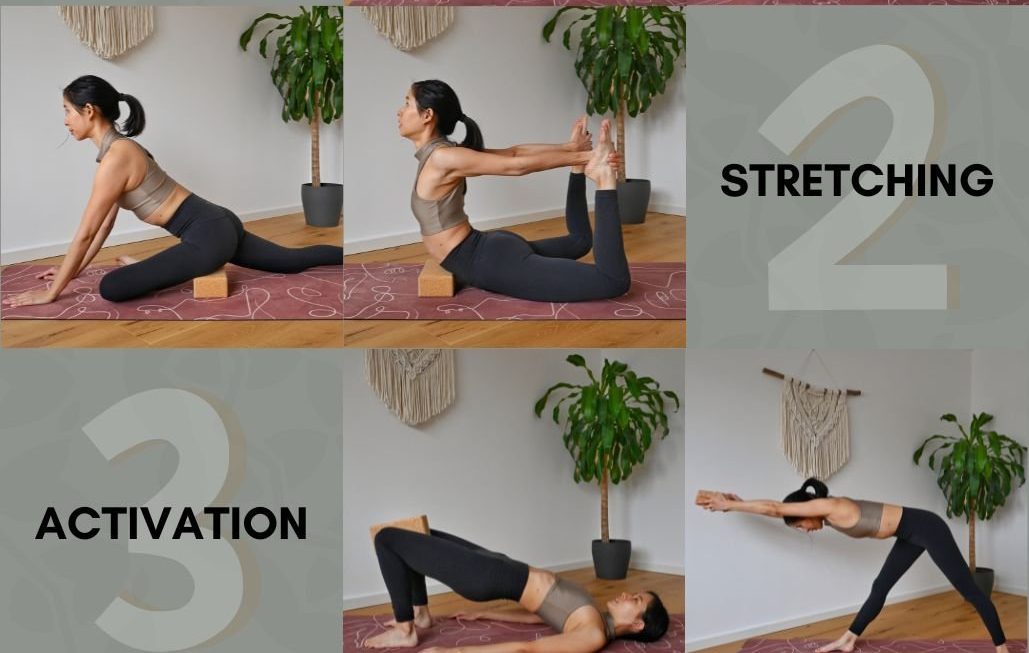Learning Ashtanga Yoga can seem daunting at first. Yet, with the right guidance, it becomes an enriching journey.
Ashtanga Yoga, a dynamic form of yoga, involves a set sequence of postures. It focuses on breath, gaze, and movement. This practice not only strengthens the body but also calms the mind. For beginners, understanding its core principles is crucial.
This yoga style requires discipline and patience. But, it offers immense rewards for both physical and mental health. In this blog, we will explore practical steps to begin your Ashtanga Yoga journey. From foundational poses to breathing techniques, you’ll find everything you need. Ready to dive in? Let’s start your Ashtanga Yoga adventure today!
Introduction To Ashtanga Yoga
Ashtanga Yoga is a popular form of yoga that follows a specific sequence of postures. It is known for its rigorous practice and dynamic flow. This yoga style can help improve flexibility, strength, and mental clarity. Below, we will explore the basics of Ashtanga Yoga, its benefits, and how to get started.
What Is Ashtanga Yoga?
Ashtanga Yoga is a system of yoga that involves synchronizing the breath with a progressive series of postures. This process produces intense internal heat and a purifying sweat that detoxifies muscles and organs.
Ashtanga Yoga is divided into six series:
- Primary Series
- Intermediate Series
- Advanced A Series
- Advanced B Series
- Advanced C Series
- Advanced D Series
Each series must be mastered before moving on to the next. The practice is traditionally taught in a one-on-one setting.
Benefits Of Ashtanga Yoga
| Benefit | Description |
|---|---|
| Improved Flexibility | Regular practice helps to lengthen and stretch muscles. |
| Increased Strength | Builds muscle strength through various postures. |
| Better Mental Focus | Breathing techniques and postures improve concentration. |
| Detoxification | Sweat produced during practice helps detoxify the body. |
Ashtanga Yoga also enhances cardiovascular fitness. The flow of movements keeps your heart rate elevated.
Practicing Ashtanga can reduce stress and promote a sense of calm. The focus on breath and movement helps quiet the mind.
Overall, Ashtanga Yoga offers both physical and mental benefits. It is a holistic practice that can transform your well-being.
Preparing For Practice
Learning Ashtanga Yoga is an enriching journey. Proper preparation is essential for a successful practice. This section will guide you in creating an ideal environment. We will also discuss the essential equipment needed.
Setting Up A Practice Space
Your practice space should be quiet and free from distractions. It is vital to find a spot where you can focus. A clean and clutter-free area helps maintain a peaceful mind.
Ensure the space has enough room for you to stretch and move. Natural light is beneficial, but if not possible, choose soft, ambient lighting. Fresh air is important, so keep windows open if you can.
- Quiet and distraction-free
- Clutter-free
- Enough room for movement
- Natural or soft lighting
- Good ventilation
Essential Equipment
Having the right equipment makes your practice more comfortable and effective. Here are the essentials:
| Item | Importance |
|---|---|
| Yoga Mat | Provides grip and cushioning |
| Yoga Blocks | Supports and deepens stretches |
| Yoga Strap | Helps in achieving proper alignment |
| Comfortable Clothing | Allows free movement |
Investing in high-quality items enhances your practice. A good mat provides grip and cushioning. Yoga blocks and straps support deeper stretches and proper alignment. Wear comfortable clothing that allows free movement.
Understanding The Basics
Understanding the basics of Ashtanga Yoga is essential for beginners. Ashtanga Yoga is a dynamic and structured practice. It involves a set sequence of postures and breathing techniques. Learning these fundamentals helps build a strong foundation. This will make the practice more effective and enjoyable.
Fundamental Postures
Ashtanga Yoga starts with the Primary Series. This series includes foundational postures. Sun Salutations are the first step. They warm up the body and prepare it for deeper poses. Standing postures follow. They build strength and improve balance. Seated postures come next. They enhance flexibility and promote relaxation. Each posture flows smoothly into the next. This creates a meditative and rhythmic practice.
Breathing Techniques
Breathing, or “Ujjayi,” is crucial in Ashtanga Yoga. It involves deep, controlled breaths. This technique helps maintain focus and energy. Each movement is synchronized with a breath. Inhale while extending, and exhale while folding. This creates a steady flow of energy throughout the practice. Breathing also helps cleanse the body. It removes toxins and improves overall well-being.
Learning The Primary Series
Ashtanga Yoga is a dynamic and structured practice. It follows a specific sequence of postures. The Primary Series, known as Yoga Chikitsa, is the first level. It focuses on aligning the body and detoxifying. Learning the Primary Series can be both challenging and rewarding. This guide will help you understand and master it.
Overview Of The Primary Series
The Primary Series consists of a set sequence of poses. These poses are designed to detoxify and align the body. It starts with sun salutations. Then, it moves on to standing poses, seated poses, and finishing poses. Each pose prepares the body for the next. Breath control, or ujjayi breathing, is essential throughout the practice. This helps create a flow and builds internal heat.
Step-by-step Guide To Poses
Starting with Sun Salutations is key. Begin with Surya Namaskara A. Stand at the front of your mat. Inhale, raise your arms overhead, and exhale as you fold forward. Inhale to lift your head, and exhale to step back into plank. Lower down, inhale to upward-facing dog, and exhale to downward-facing dog. Repeat this five times.
Next, move to Surya Namaskara B. This includes the same steps as A but adds in a few more poses. Inhale to chair pose and exhale to forward fold. Continue through the same sequence as A. Repeat this five times as well.
After sun salutations, proceed to the standing poses. Begin with Padangusthasana and Padahastasana. These forward folds help stretch the back of your body. Move on to Trikonasana and Parivrtta Trikonasana. These triangle poses help in balance and alignment.
Seated poses come next. Start with Dandasana for alignment. Move to Paschimottanasana for a deep forward fold. Follow with Purvottanasana to open the front body. Continue with poses like Janu Sirsasana and Marichyasana. These poses help with flexibility and strength.
The series ends with finishing poses. This includes backbends like Urdhva Dhanurasana. Finally, practice Sirsasana and Sarvangasana. These inversions help with blood flow and focus. End with a long Savasana for relaxation and integration.
Incorporating Vinyasa
Learning Ashtanga Yoga involves mastering the flow of Vinyasa. Vinyasa is the connection of breath and movement. It helps to create a seamless transition between poses. This flow enhances your yoga practice and builds strength.
Connecting Breath And Movement
In Vinyasa, each movement is linked to a breath. For example, you inhale while raising your arms and exhale while folding forward. This connection is essential in Ashtanga Yoga. It helps to maintain focus and stability. Below is a simple guide:
- Inhale: Lift arms up
- Exhale: Fold forward
- Inhale: Look forward
- Exhale: Step back into plank
Practice this sequence slowly at first. Focus on synchronizing each breath with each movement. Over time, this will become second nature.
Transitioning Between Poses
Transitions in Vinyasa are as important as the poses themselves. Smooth transitions help to maintain the flow of energy. They also prevent injuries. Here is how to transition smoothly:
- Complete the pose fully.
- Take a deep breath in.
- Move to the next pose on the exhale.
For example, transitioning from Downward Dog to Plank:
| Pose | Breath | Action |
|---|---|---|
| Downward Dog | Inhale | Lift hips high |
| Plank | Exhale | Lower hips and shoulders |
Practice these transitions with mindfulness. Focus on the breath and the movements. This will help you to flow smoothly from one pose to the next.
Developing A Routine
Developing a routine is essential for mastering Ashtanga Yoga. A well-planned routine ensures consistency and progress. This helps in building strength, flexibility, and mental focus. Below are tips on how to create a consistent schedule and track your progress effectively.
Creating A Consistent Schedule
Start by choosing a specific time for your practice. Early mornings are ideal for most people. The mind is fresh and the body is energized. Stick to this time every day to build a habit. Consistency is key in Ashtanga Yoga.
Set realistic goals for your practice. Begin with shorter sessions. Gradually increase the duration as you get comfortable. This prevents burnout and keeps you motivated. Remember, even a 20-minute daily session is beneficial.
Prepare your space in advance. Keep your yoga mat and props ready. A clean, quiet space helps in staying focused. Avoid distractions during your practice time. Turn off your phone and limit interruptions.
Tracking Progress
Keep a yoga journal to track your progress. Note down each session’s details. Include the duration, poses practiced, and how you felt. This helps in identifying patterns and areas for improvement.
Take regular photos or videos of your practice. Visual records are useful for seeing physical changes. They can boost your motivation. Compare these with your earlier records to see how far you’ve come.
Reflect on your mental and emotional changes. Ashtanga Yoga impacts more than just the body. Regular practice brings mental clarity and emotional stability. Note these changes in your journal too.
Join a community or group. Sharing your journey with others can be encouraging. You can exchange tips, experiences, and support each other. Many find this social aspect beneficial for staying committed.
Overcoming Challenges

Learning Ashtanga Yoga can be a transformative journey. Yet, it comes with its own set of challenges. Many beginners face obstacles that can hinder their progress. Understanding these challenges can help you stay on track. Let’s explore common obstacles and how to stay motivated.
Common Obstacles
One common obstacle is the physical demand of Ashtanga Yoga. The practice can be intense. Your body needs to adapt to new movements. Soreness and fatigue are normal in the beginning. Remember, progress takes time.
Another obstacle is maintaining consistency. Life can get busy. Finding time for daily practice can be tough. Yet, consistency is key to improvement. Even short sessions matter.
Mental barriers also play a role. Doubt and frustration can creep in. Comparing yourself to others can be discouraging. Focus on your own journey.
Staying Motivated
Setting small, achievable goals can keep you motivated. Celebrate each milestone. Progress, no matter how small, is worth acknowledging.
Creating a routine helps maintain discipline. Practice at the same time each day. This builds a habit. Soon, it becomes a part of your daily life.
Find a community or a mentor. Practicing with others can be inspiring. Sharing experiences can provide support. You’re not alone in this journey.
Remember to be kind to yourself. Progress may be slow, and that’s okay. Patience is part of the process. Keep going, and you will see improvement.
Seeking Guidance
Learning Ashtanga Yoga is a transformative journey. It requires dedication and proper guidance. Seeking the right guidance can make your practice more effective and rewarding. This section will cover how to find a qualified teacher and join a supportive community.
Finding A Qualified Teacher
A qualified teacher is crucial for your Ashtanga Yoga journey. Look for someone certified by recognized institutions. They should have extensive experience in teaching Ashtanga Yoga. A good teacher will understand your abilities and limitations.
Consider these points when selecting a teacher:
- Certification from a reputable organization.
- Years of teaching experience.
- Positive reviews from other students.
- Personal connection and comfort level.
Joining A Community
Joining a community can enhance your yoga practice. Being part of a group provides motivation and support. You can share experiences and learn from others. Many cities have local Ashtanga Yoga groups or clubs.
Benefits of joining a yoga community:
- Regular practice sessions.
- Access to workshops and events.
- Support from fellow practitioners.
- Guidance from experienced members.
Online communities are also available. They offer virtual classes and forums for discussion. Seek out both local and online communities to enrich your practice.
Advanced Practices
Ashtanga Yoga offers a progressive journey from basic to advanced levels. Advanced practices help practitioners gain deeper insights and achieve greater control over their bodies. This section explores the intermediate and advanced series and ways to deepen your practice.
Intermediate And Advanced Series
The Intermediate Series in Ashtanga Yoga builds on the foundation of the Primary Series. It is also known as Nadi Shodhana, which means nerve cleansing. This series focuses on backbends, hip openers, and balancing poses. Practitioners develop strength, flexibility, and mental focus.
The Advanced Series consists of A, B, C, and D sequences. Each sequence is more challenging than the previous one. These series are for experienced practitioners. They involve complex postures and deep stretches. Mastery of these series requires dedication and consistent practice.
Deepening Your Practice
To deepen your Ashtanga Yoga practice, focus on consistency. Practice regularly and maintain a disciplined routine. This will help build strength and flexibility over time.
- Pranayama: Incorporate breathing exercises to enhance your practice. Proper breathing techniques improve focus and relaxation.
- Meditation: Spend time meditating each day. This helps in calming the mind and increasing mental clarity.
- Adjustments: Seek guidance from experienced teachers. They can provide adjustments and corrections to improve your postures.
- Self-Study: Keep learning about the philosophy and principles of Ashtanga Yoga. Reading books and attending workshops can be helpful.
Remember, the journey of Ashtanga Yoga is personal. Progress at your own pace and listen to your body. Enjoy the process of growth and transformation.
Frequently Asked Questions
What Is Ashtanga Yoga?
Ashtanga Yoga is a dynamic style of yoga. It involves a set sequence of postures. This practice focuses on breath and movement.
How To Start Learning Ashtanga Yoga?
Start with beginner classes or online tutorials. Learn the basic poses and sequences. Gradually increase the difficulty as you progress.
What Are The Benefits Of Ashtanga Yoga?
Ashtanga Yoga improves flexibility, strength, and balance. It also enhances mental clarity and reduces stress.
Can Beginners Do Ashtanga Yoga?
Yes, beginners can practice Ashtanga Yoga. It’s important to start slow and be patient. Listen to your body and progress gradually.
Conclusion
Ashtanga Yoga offers a path to physical and mental wellness. Start slowly and be patient with yourself. Consistent practice is key. Remember to focus on your breath and alignment. Seek guidance from a qualified teacher. Enjoy the journey and celebrate small progress.
Everyone’s path in yoga is unique. Stay committed and you will see benefits. Begin your practice today and embrace the positive changes.



